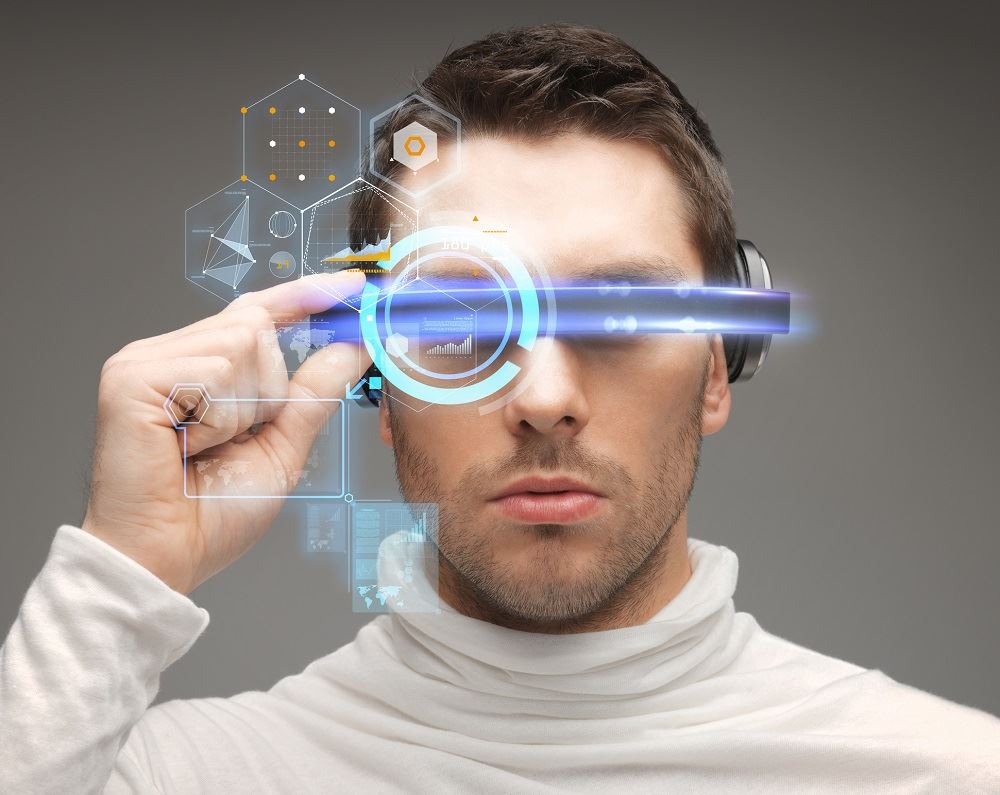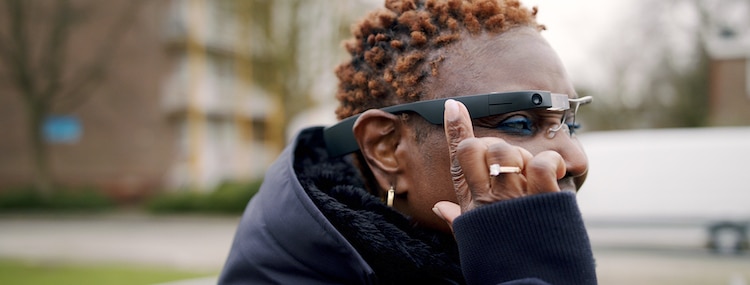Empowering Self-reliance With Assistive Modern Technology for the Blind
The assimilation of assistive technology for individuals who are blind or aesthetically impaired represents a substantial innovation in fostering freedom and enhancing quality of life. With a range of devices-- from screen viewers to cutting-edge responsive devices-- these innovations not only assist in navigating and interaction yet additionally advertise social incorporation and involvement in different aspects of life.
Understanding Assistive Technology
Although assistive modern technology has actually evolved dramatically throughout the years, its basic purpose continues to be the exact same: to enhance the top quality of life for individuals with specials needs, particularly those that are aesthetically impaired or blind. This modern technology includes a broad series of devices and tools that promote freedom and functionality in daily activities.
Assistive modern technology can be classified right into low-tech and state-of-the-art solutions, each developed to meet particular needs. High-tech devices commonly include software program applications, specialized equipment, and adaptive tools that utilize sophisticated innovation to offer assistance in numerous contexts. On the other hand, low-tech services might involve everyday items that are changed to enhance access, such as magnifiers or responsive pens.
The combination of assistive technology right into the lives of people who are blind or visually hindered not just promotes autonomy however also promotes social addition and engagement in academic and expert environments. By leveraging these innovations, customers can browse their surroundings, accessibility information, and interact effectively, therefore enhancing their total high quality of life. Recognizing assistive technology is vital for professionals, caretakers, and advocates that intend to sustain people in maximizing their prospective and attaining better independence.
Kinds of Assistive Instruments
Assistive devices for the blind and visually impaired are crucial devices that boost daily living by resolving specific challenges experienced by users. These devices can be generally classified into three major types: optical tools, digital gadgets, and sensory devices.

Sensory gadgets, such as Braille display screens and responsive maps, supply different ways to receive details. Braille displays transform digital message right into Braille, allowing users to read with touch. Tactile maps offer spatial understanding with increased textures and lines, permitting much better environmental awareness.
Together, these assistive tools empower people with visual disabilities to engage more fully with their surroundings, advertising better freedom and self-confidence in day-to-day tasks.

Influence On Day-to-day Live
The combination of assistive technology into the every day lives of individuals that are blind or aesthetically impaired substantially improves their ability to browse and engage with the globe around them. Gadgets such as display viewers, Braille displays, and mobile applications help with access to information, permitting users to involve with digital content, connect successfully, and manage day-to-day jobs separately.
Furthermore, technologies like wise glasses and navigation applications offer real-time assistance in unfamiliar atmospheres, improving flexibility and self-confidence. These devices allow users to identify barriers, read signs, and clinical optometry meaning also recognize faces, therefore promoting a feeling of freedom in public spaces. In addition, home automation systems, which can be managed via voice commands, permit individuals to manage their living settings much more effectively, improving comfort and safety and security.
The impact of assistive modern technology extends past useful jobs; it promotes social inclusion and psychological health. By connecting the space in between individuals and their environments, these modern technologies equip users to get involved totally in community activities, pursue educational chances, and take part in significant partnerships. Ultimately, the innovation of assistive innovation contributes in redefining the possibilities for individuals that are blind or visually impaired, causing an extra available and comprehensive culture.
Success Stories and Endorsements

An additional effective testimony originates from Mark, a current university graduate who utilized display analysis software program throughout his scholastic journey. This technology enabled him to gain access to course materials and take part in conversations, eventually causing his successful transition right into the workforce. Mark credit histories assistive innovation for encouraging him to accomplish his occupation goals, emphasizing its duty in leveling the having fun field for people with aesthetic disabilities.
Furthermore, community facilities have actually reported enhanced engagement in their programs many thanks to the intro of obtainable electronic platforms. These platforms have actually made it much easier for individuals to attach, share resources, and support each other. These success tales jointly emphasize the profound effect of assistive modern technology in fostering self-reliance, boosting top quality of life, and breaking down barriers for the visually impaired and blind check my source neighborhood.
Future Fads in Assistive Technology
Emerging modern technologies are poised to revolutionize the landscape of assistive technology for individuals who are blind or visually impaired. Innovations in expert system (AI) and machine discovering are enhancing the abilities of tools, allowing more instinctive user experiences. AI-driven applications are significantly able to check out and acknowledge things message out loud in real-time, giving customers with valuable info concerning their environments.
Additionally, developments in wearable innovation are producing new opportunities for independence. Smart glasses equipped with increased fact functions can overlay important details onto the customer's area of vision, assisting in navigation and communication with the environment. Additionally, the integration of Net of Points (IoT) tools is simplifying availability in smart homes, permitting individuals to regulate devices and obtain notices via voice commands or tactile user interfaces.
The growth of braille display screens and responsive comments systems is likewise growing, advertising access to electronic content and enhancing interaction. As these modern technologies proceed to develop, they guarantee to improve everyday living, instructional possibilities, and employment potential customers for people with aesthetic impairments. Constant cooperation in between technologists, individuals, and campaigning for teams will be crucial in guaranteeing these developments satisfy the demands of the community successfully.
Verdict
To conclude, assistive innovation plays an essential duty in enhancing the independence of individuals who are aesthetically impaired or blind. By offering crucial devices and resources, these modern technologies promote improved interaction, navigation, and access to info, thereby promoting autonomy and self-esteem. The transformative impact of assistive devices not just advertises reliable communication with the environment but additionally encourages social inclusion and participation in various facets of life, inevitably encouraging individuals to prosper within their communities.
The combination of assistive technology for individuals who are visually damaged or blind stands for a considerable improvement in promoting self-reliance and enhancing high quality of life.The combination of assistive modern technology right into the lives of individuals who are blind or aesthetically hindered not only promotes autonomy but additionally cultivates social inclusion and engagement in professional and instructional settings. Ultimately, the advancement of assistive innovation is instrumental in redefining the opportunities for people that are blind or visually impaired, leading to an extra inclusive and accessible culture.
Lots of people that are blind or aesthetically impaired have shared motivating success tales that highlight the transformative impact of assistive modern technology on their lives.In verdict, assistive technology plays an essential role in improving the freedom of individuals that are blind or aesthetically impaired.